There are days when doing underwater photography in New Jersey can be quite challenging – bordering on the impossible. Yesterday’s dive was one of those days. Chris Bain, Wes and Beth Dalzell, Ed Kamper, my wife, Veronica and me motored out into Lake Atlantic for a day of scuba diving. The ocean was pretty calm with waves of about a foot. The early morning air temperatures were pretty chilling. In Brick, New Jersey, we woke to 41 degrees, Ed and Chris reported temps in the 30’s. This is the time of the year when the water temperatures are in the middle to low 60’s but the morning air temperatures are not so balmy. In any case, we were happy that the winds were light and the seas were flat. We decided to make a shipwreck named the Hankins as our first (and maybe if conditions were good), our only stop for the day. My notes about the Hankins read: An unidentified shipwreck which lies in 75′ of water. The wreckage is about 200′ long x 40′ wide.
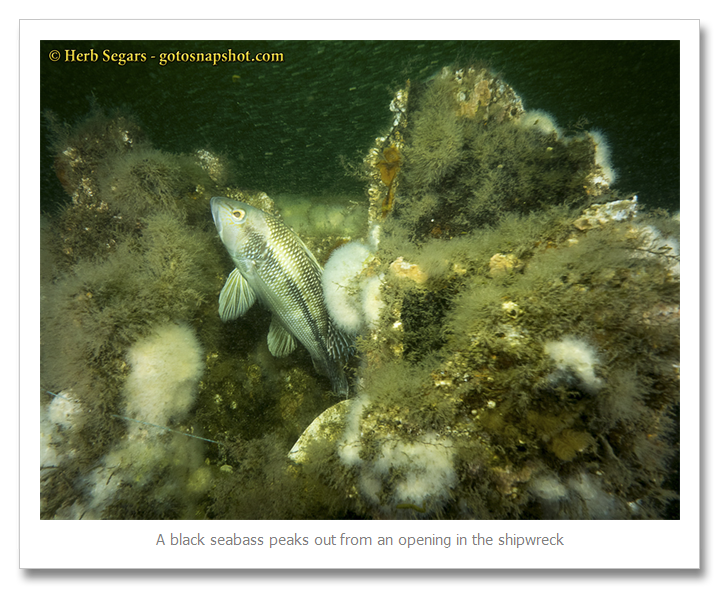
We were all wondering what the northeasters in the last few weeks had done to the ocean. The whole summer has been a frustrating one for scuba divers. The top 40’-50’ of water has been a yellowish color and the bottom has had good visibility but it has been very dark. Three of the four of who were diving were wearing wetsuits so we were concerned about temperatures on the bottom.
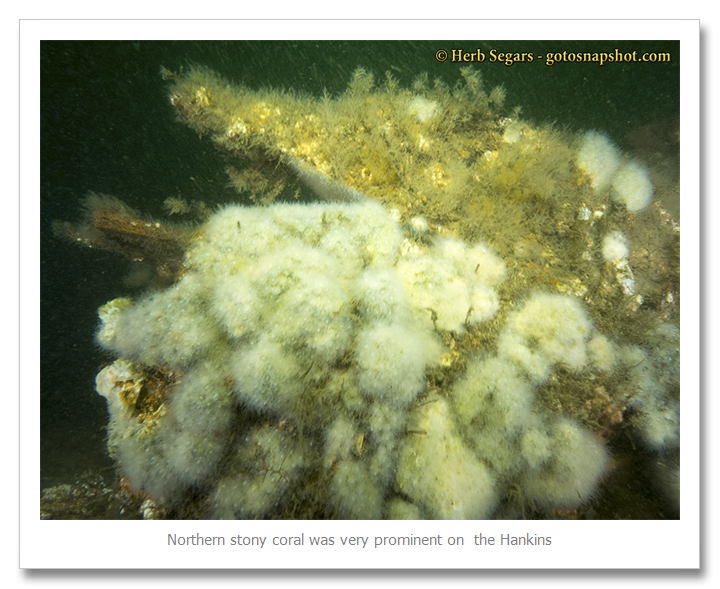
We hooked in quickly and Beth and I were the first to splash. The surface water was not so yellow but there were no jellyfish. They are one of my favorite subjects and I have yet to see one this summer near the surface. This also means that I will not see one this year and today’s dives were our last for the season. The surface water temperature was 64 degrees and it stayed at 64 degrees all the way to the bottom. My next thought was would I have the light and the visibility to take photos.
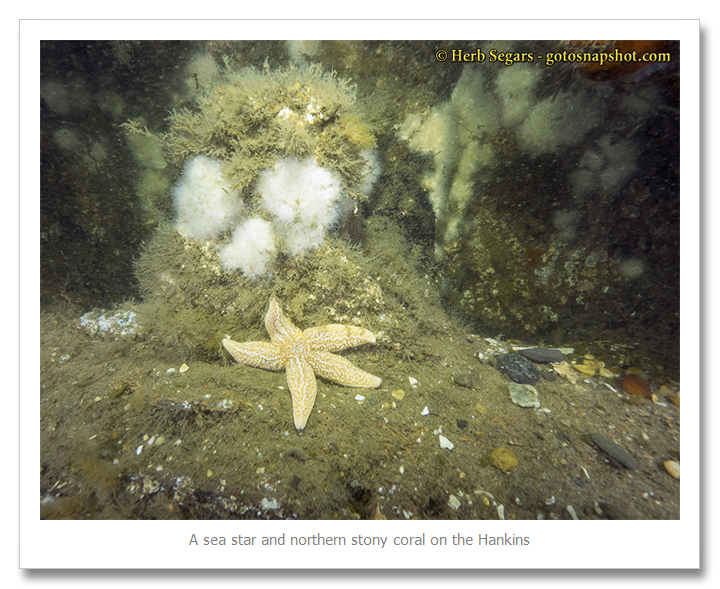
The answer to my question was “kind of.” It was dark on the bottom and initially, the visibility seemed okay. That was until we started moving around and kicking up the silty bottom. It didn’t take long for us not to be able to follow the ship’s rib back to the anchor line without hanging on to it and even then, I lost it a couple of times. As long as we could swim where we had yet been, the visibility was okay. That’s how I managed to get the photos that I did.
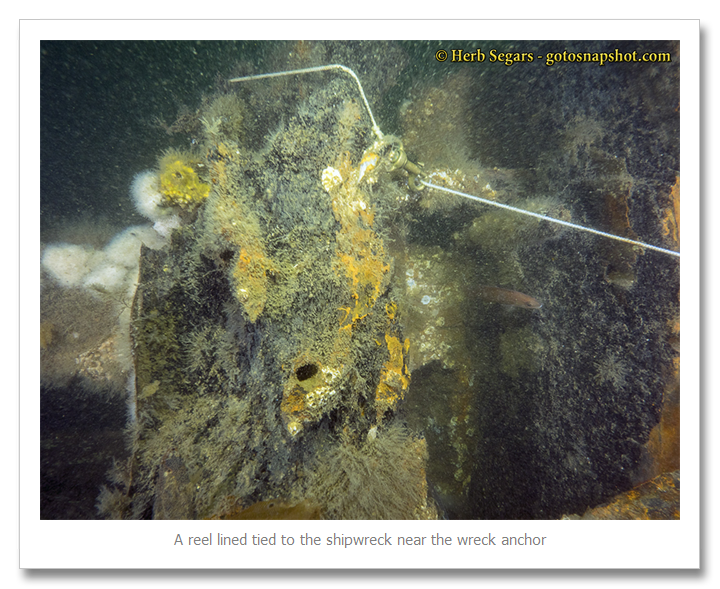
Many divers use line reels when visibility is not good. Ed used one for his dive. The photo above is where he tied off his line near the wreck anchor. The line reel looks like a fly casting reel with heavier line. You let line out as you swim along and then reel yourself back to the anchor. Today was a good day to use one. I don’t because between the camera and the line reel, I usually end up wrapped in line at the end of the dive.
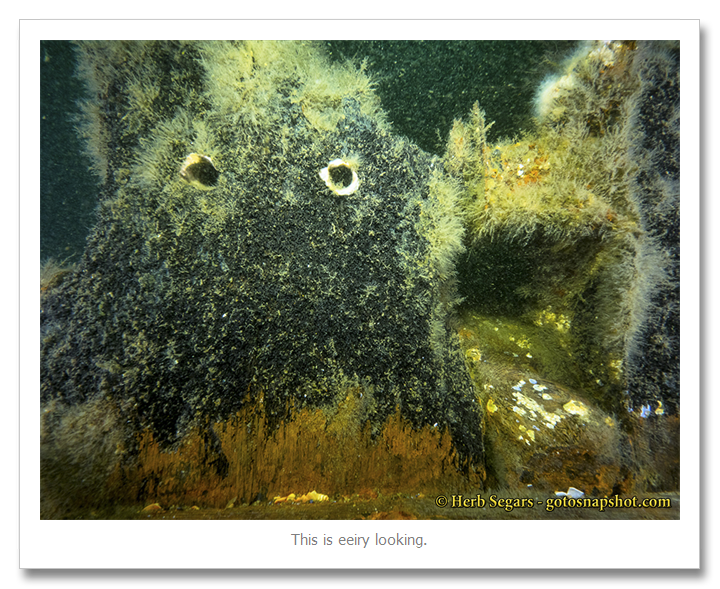
Beth was on the lookout for a lobster dinner but it was not to be. Chris did manage to bag himself one for dinner. There are some things that happen that put a smile on my face even on days when the photography is so hard. Beth had tried to show me something during the dive but lost it when she was signally me to come over. She would tell me on the surface what it was. It ended up that I found what Beth had been looking for although I am not sure that it was the same specimen.
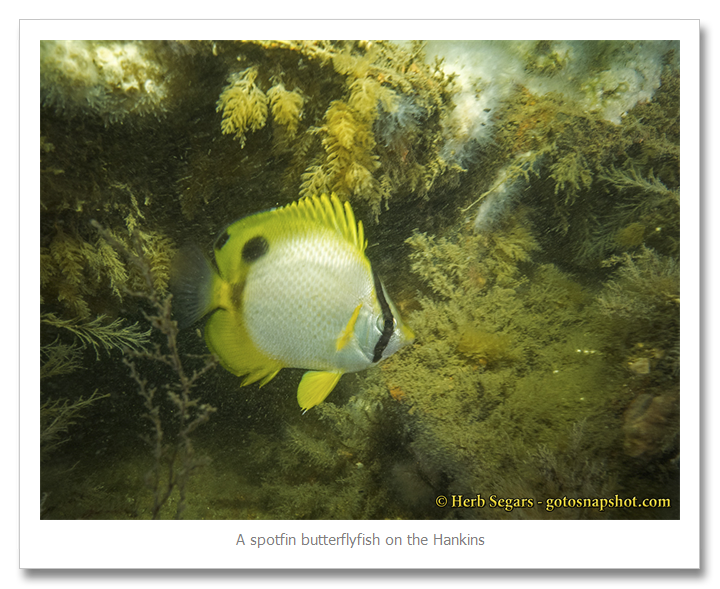
Towards the end of my dive, I spotted a flash of yellow and realized it was a spotfin butterflyfish. They are not a New Jersey fish but are swept north from warmer waters by the Gulf Stream. Eddies form off the Gulf Stream and bring tropical species close to our shores. Unfortunately, when the waters get cold, these tropicals die. This fish gets it’s name from the spot on the back of its body. When a predator goes after another fish, it looks for the fishes eye and anticipates the direction that the fish will take when the predator attacks. The spotfin butterflyfish has a false eye on the back of its body and has a dark band that goes through its real eye. The predator expects the butterflyfish to go left when attacked. It goes right and evades the attach. Pretty amazing!
We decided not to do another dive here and chose the Lana Carol as our second stop. The Lana Carol, a 71′ long steel hulled scallop dredge, was heading home to Point Pleasant, New Jersey with a hold full of scallops when she encountered very heavy seas. This was not an unusual occurrence for a commercial fishing vessel operating in Atlantic waters. Her captain noticed that the hatch to the aft scallop hold had washed away and she was taking on water very fast. The Captain and crew could not overcome the great influx of water and the Lana Carol sunk in 85′ of water about 10 miles southeast of Manasquan Inlet.The Lana Carol was 71 feet long with a 21 feet beam and weighed 100 tons. She was built in 1973 and sank on October 31, 1976, an eventful Halloween for her crew, all of whom were rescued.
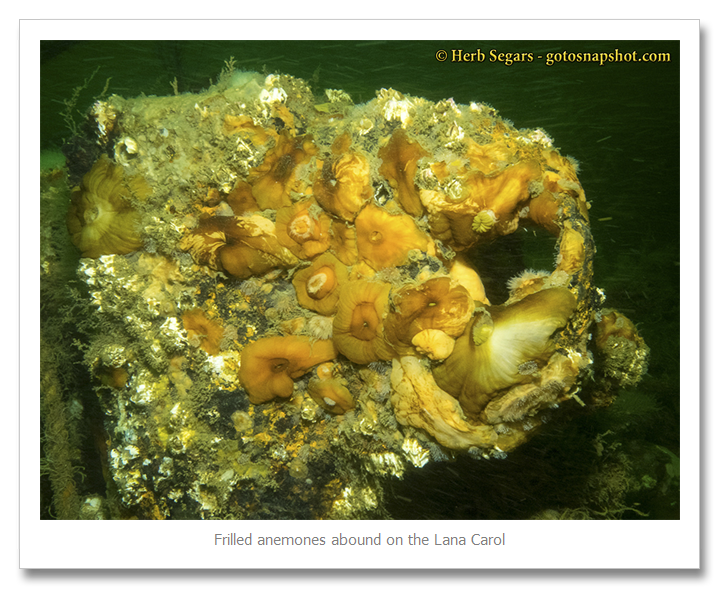
We chose the Lana Carol because it sticks up higher in the water column and hoped that we might have better visibility on the deck and pilot house of the shipwreck. It was certainly better but nothing to write home about.
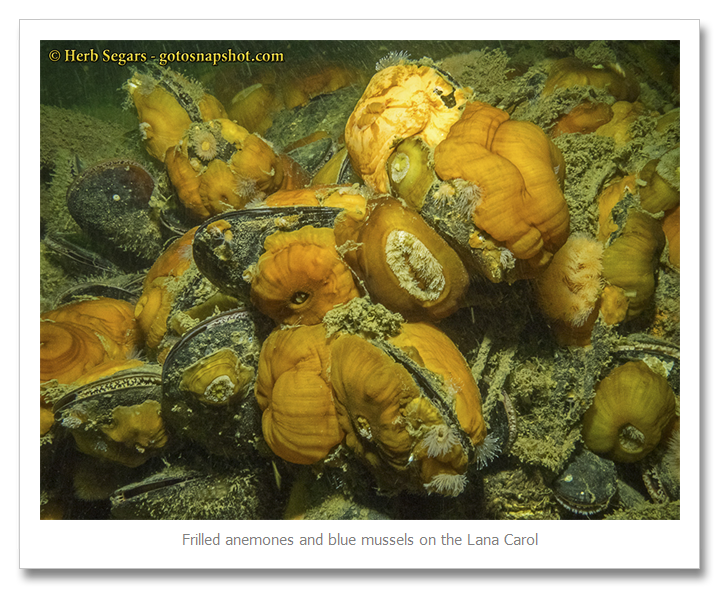
Beth and I went in first and encountered the same conditions that we had on the Hankins. A temperature of 64 degrees from the surface to the bottom and a lot of particulate matter in the water column. The bottom around the Lana Carol is sandy and does not get as stirred up as the muddy bottom at the Hankins.
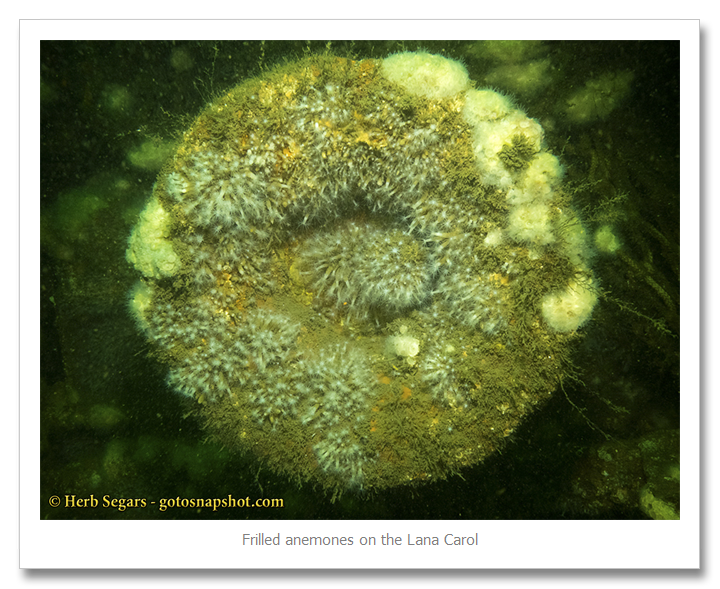
The Lana Carol is one of my favorite shipwrecks for wide angle photography but that would not happen today. It’s okay because we all had a lot of fun diving today. It was not the best day for photos but that has happened in the past and will happen in the future. Towards the end of my dive, Chris grabbed me and took me down to the sandy bottom right as the edge of the ship’s hull. He aimed his dive light and it took me a little time to see what he was showing me.
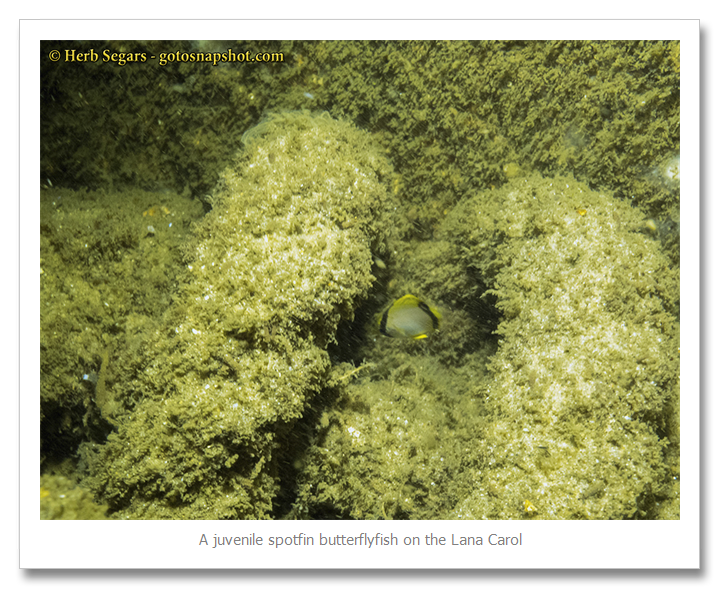
This was a great find although I didn’t really have the right photo equipment. He had pointed out a juvenile spotfin butterflyfish. It was about one-half inch long. You can see that it does not have a false eye on the back of its body. The reason is that the fish is so small, that whichever direction a predator guesses, the fish probably won’t move enough to make a difference. That is perhaps the reason that it has two black bars and no discernable eye. Mother Nature is amazing.
Well, that finished up our dive season for this year. The boat comes out of the water around November 1st and all of us have commitments on one sort or the other for the remaining weekends in October. It was not my best dive season but as it is often said, “a day of diving beats a day at work anytime.”
© 2015, Herb Segars. All rights reserved.

